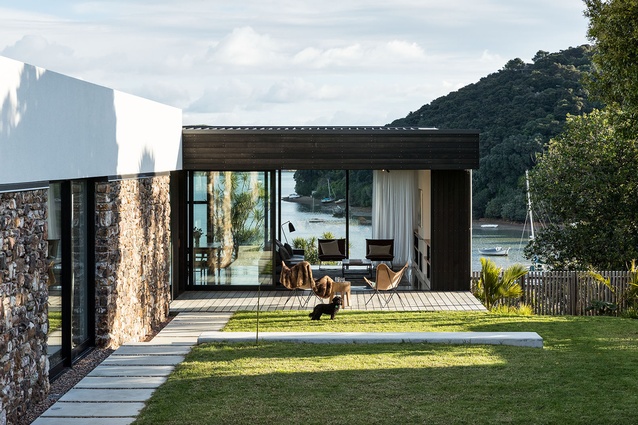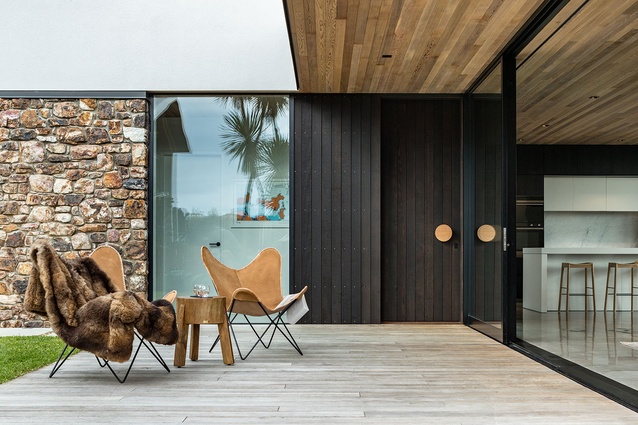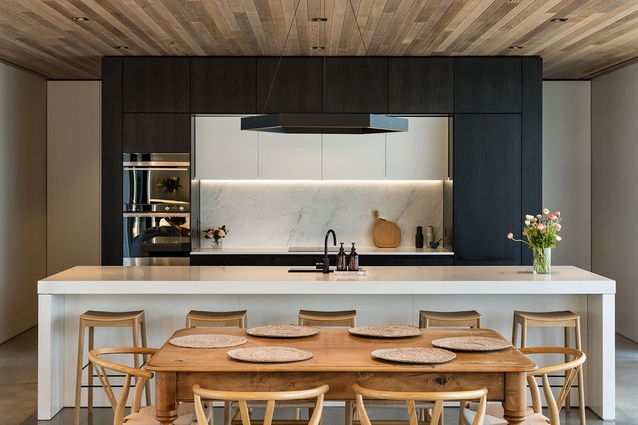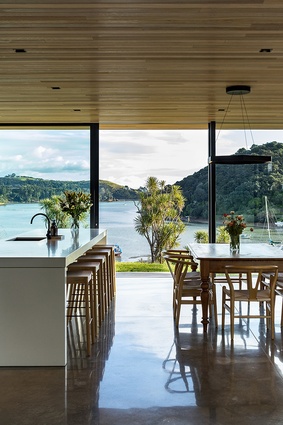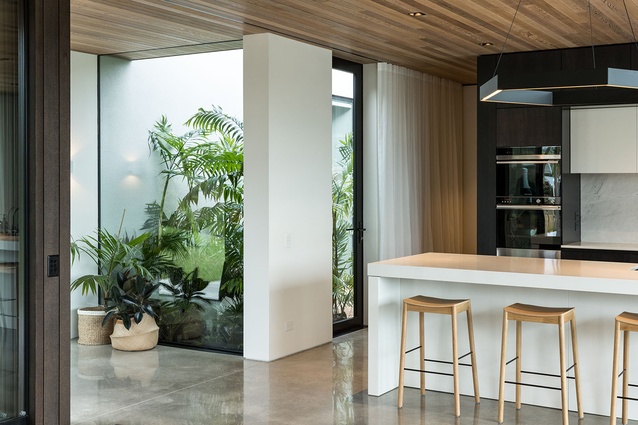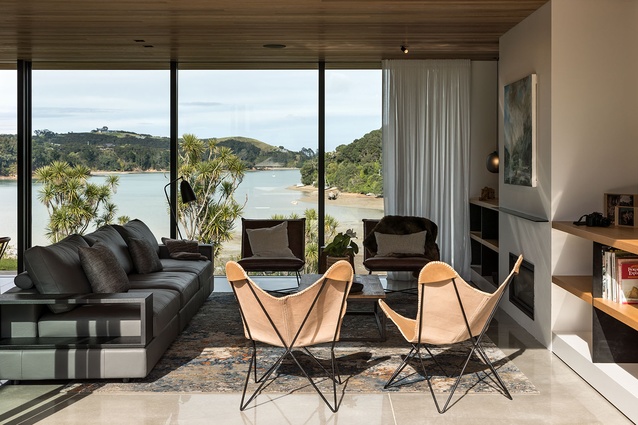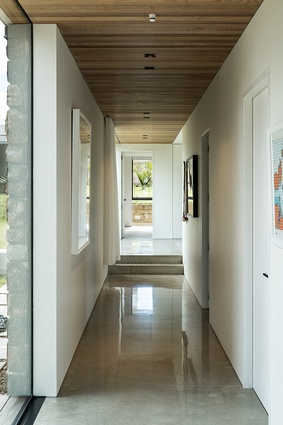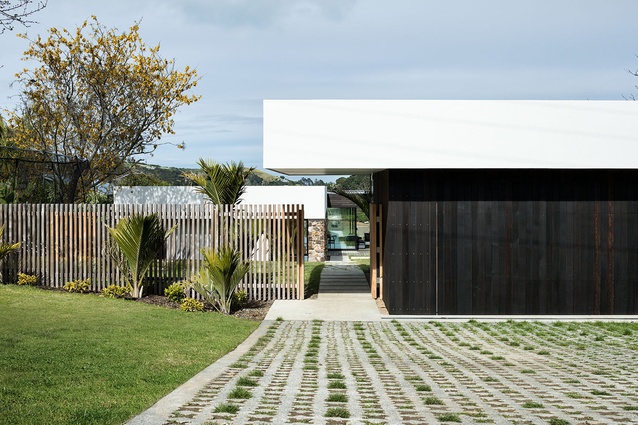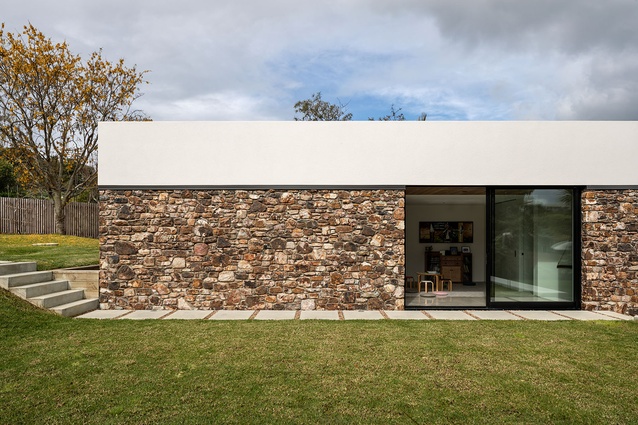Island oasis: Anzac Bay House
This award-winning Waiheke home by JDA Studio Architects offers a young family privacy, expansive views and a sophisticated see-through pavilion.
Originally from Dunedin, Sydney-based architect John Deuchrass studied architecture in Auckland before joining Bossley Architects as a young graduate. It was in Pete Bossley’s Ponsonby studio that the Southerner cut his teeth in residential design, working on a number of notable beach houses, including the award-winning Fold House in the Bay of Islands.
“Pete often talked about encampments in his designs,” says Deuchrass, “and that was one of the pivotal things that I took away from the studio. It’s about breaking up the forms into spaces and, sometimes, it’s the spaces between buildings that are of the most interest. That concept of ‘encampment’ has certainly stayed with me.”
Here, in Deuchrass’s first New Zealand project since starting up his eponymous practice in Sydney’s northern beaches in 2016, we see a distinct sense of enclosure, with an L-shaped house uniting with a garage and cantilevered entry canopy to frame a terraced courtyard garden on three sides. Once inside the private site, we are drawn to the immersive views of Anzac Bay beyond, through an almost fully-glazed, pavilion-like structure that the architect describes as a ‘stage’.
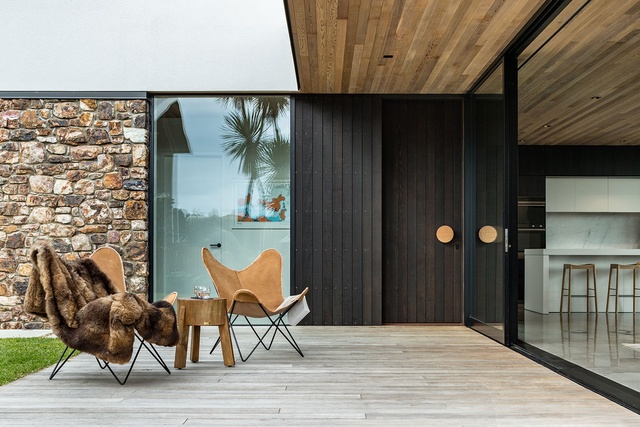
The house was commissioned by Deuchrass’s sister and brother-in-law, who had also moved north from Dunedin but, in this instance, to the southern shores of Waiheke Island. The couple and their three young children had previously owned a house built on 5-metre stilts further up the hill and, having been subject to frequent wind gusts, were keen to build something “solid and robust”.
In response to that brief, the strong but simple envelope is firmly grounded into the south-facing bank. A solid wall of local rock from the nearby Hoporata Quarry anchors the left bedroom wing of the house to its site while at the same time setting up a linear arrangement which guides you south along the entry path to the front door. “I think the conversation initially was around earthy materials and something that was going to be quite raw and natural,” explains Deuchrass. “So, that was when I introduced the concept of the rock. I love that language – it’s out of the earth and it has a really beautiful colour palette and textures that play off the white rendered form.”

One of the greatest challenges to the design was the site’s orientation, which Deuchrass describes as “a little bit back to front.” With the beautiful water views and the prevailing wind to the south and the entertaining and outdoor play areas facing north, extensive glazing on both sides of the living wing was key, “so that from the sheltered courtyard, they always have that connection through to the water.”
Inside, the relatively modest 218m2 footprint makes clever use of space and sophisticated detailing to provide what is a spacious, four-bedroomed family home. By increasing the hallway width by just 400mm and coupling this with polished concrete floors, negative details and a selection of artworks, the hall effectively doubles as a gallery space, off which the children’s playroom and bedrooms are situated.
The kitchen, which sits within the living pavilion, is broken visually into a separate coherent element, “like a block within a block” explains Deuchrass. A dark chocolate veneer wraps around and defines the space, soft, white diaphanous curtains float at either side, and a door opens off the kitchen to a small internal garden, which breaks the two adjacent forms of the bedroom and living wings.
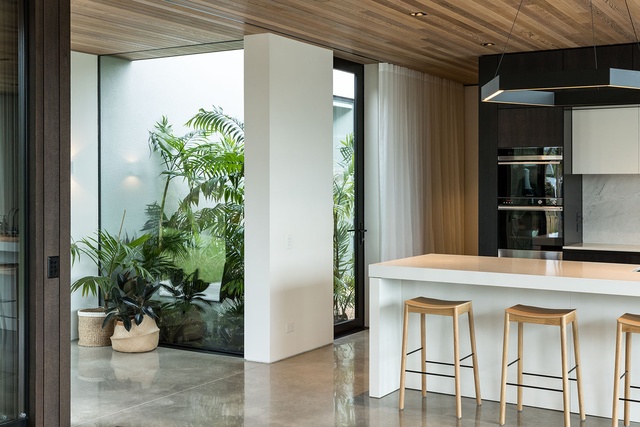
Sustainable, passive design practices are seen throughout the build, including the geothermal mass of the concrete slab absorbing and releasing the sun’s heat, cross ventilation, roof rainwater stored in two 30,000-litre tanks buried on the property, and wastewater treated on-site. “The house is also designed to keep running costs to a minimum,” says Deuchrass, “with insulated walls, double glazing, hydronic in-floor heating, and the orientation and design of the house with the sun in mind.”
Any wastewater generated from the collected rainwater is drip-released to surface laid disposal fields on the south-facing bank, where native planting has been introduced for both stability and privacy. When the planting has taken hold, the family plans to build a track down to the water. Happily, several existing mature trees were salvaged in the design, including a large plum tree, and vegetable and herb gardens have also been created on-site.
What Deuchrass has created here on a relatively constrained budget is at once simple, solid and connected to its site yet, also, undeniably elegant and sophisticated. The contrasting dark stained cedar and local rock reflect the surrounding natural environment and the white rendered parapets above are constantly transformed by the ever-changing light. It is a beautiful project and a true island oasis, much like the projects Deuchrass worked on when he first started out 13 years ago.
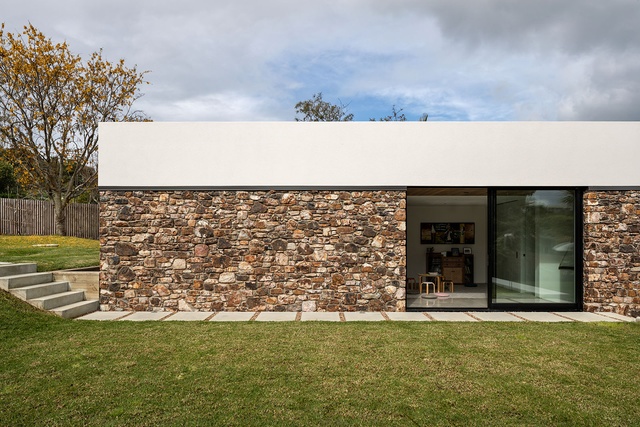
Material Palette
Architect John Deuchrass talks about creating the rock wall and detailing the interior ceilings.
Were there challenges in building with the local Waiheke rock?
John Deuchrass (JD): From a design point of view, it had to be quite a thick wall (about 180mm) because the rock doesn’t actually split – unlike the Central Otago schist, which you can split and stack. And we wanted to give it the appearance of a dry-stack wall, without too much grout visually within, so it seems more handcrafted and less trowelled on – a bit more earthy. It presented the builder with some challenges of how best to build it but he did a magnificent job.
Tell us about the ceilings.
JD: Bear in mind that there’s quite a lot of external timber in this project which is designed to “silver off”, like the front fencing, the deck and some cladding, The interior ceilings are a natural cedar but we didn’t want anything that was too harsh on the eye so we used a grey shale over the top. It’s a Dryden product called Dune and it provides just a slight whitewash to it, which takes the deep, rich timber aesthetic off it and softens it slightly.

